- News
- Reviews
- Bikes
- Components
- Bar tape & grips
- Bottom brackets
- Brake & gear cables
- Brake & STI levers
- Brake pads & spares
- Brakes
- Cassettes & freewheels
- Chains
- Chainsets & chainrings
- Derailleurs - front
- Derailleurs - rear
- Forks
- Gear levers & shifters
- Groupsets
- Handlebars & extensions
- Headsets
- Hubs
- Inner tubes
- Pedals
- Quick releases & skewers
- Saddles
- Seatposts
- Stems
- Wheels
- Tyres
- Tubeless valves
- Accessories
- Accessories - misc
- Computer mounts
- Bags
- Bar ends
- Bike bags & cases
- Bottle cages
- Bottles
- Cameras
- Car racks
- Child seats
- Computers
- Glasses
- GPS units
- Helmets
- Lights - front
- Lights - rear
- Lights - sets
- Locks
- Mirrors
- Mudguards
- Racks
- Pumps & CO2 inflators
- Puncture kits
- Reflectives
- Smart watches
- Stands and racks
- Trailers
- Clothing
- Health, fitness and nutrition
- Tools and workshop
- Miscellaneous
- Buyers Guides
- Features
- Forum
- Recommends
- Podcast
feature
The rising cost of cycling — when will this crisis stop!?
Cycling has always been a relatively costly sport, but recently it has seemingly become more ridiculous than ever. In the UK, inflation remains near a 40-year high; but can that justify the increase in the prices of bikes and bike components?
To answer this question, we’ve taken a look at some high-end bikes, entry-level bikes, and component prices since 2009 (which happens to be the year that I started cycling properly) to find out.
It’s not uncommon now for some of the best road bikes on the market to cost the same as a nice car, with many premium models costing in excess of £10,000. More worryingly perhaps, up until now, brands have seemingly had little trouble selling them. At the same time, entry-level bikes have evolved massively, often with price tags to match.
> Is this the most expensive road bike you can possibly build yourself?
The Bicycle Association actually found that the average price of bikes being sold has risen a rather staggering 26% since 2019; but as we'll see in a minute, prices were on the rise well before the pandemic, so despite manufacturers' best efforts it can't be fully blamed.
Specialized S-Works Tarmac
First up we'll take a look at the Specialized S-Works Tarmac, the bike of choice for many men’s and women’s World Tour teams.
The S-Works, being at the top of Specialized range, has never been a cheap bike. Back in 2009, when the Tarmac was in its SL3 iteration, it was priced at a fairly hefty RRP of £5,499.
Since then, the average inflation has been around 4% and given this percentage increase we would expect the Tarmac in its latest iteration (the SL7) to garner a price tag of around £8,800.
In reality though, this is not the case. It actually now comes with a five-figure price tag of £11,500, gaining £1,000 in the last year alone! Who knows how much an SL8 could be priced at, but we wouldn’t mind betting that it will be a fair chunk more than the outgoing version.
The top end has been always been expensive, but not quite this unobtainable for many.
Trek Madone
This isn’t just a dig at Specialized though, as lots of other brands are well and truly on the bandwagon. Next let's take a look at the prices of the Trek Madone, a long-standing bike in the US brand's range.
In 2009 a range-topping Madone 6.9 would’ve cost you £5,000, but will now set you back an eye-watering £13,800 for the latest SLR model. Sticking just with the rate of inflation, the price would still been four figures, costing around £8,000.
A lot of the blame for these dramatic price increases gets put firmly on the pandemic. Combine that with a boom in bike sales and you get a lot of demand and not much supply, which certainly does have an impact on rising prices. However, as you can see from Trek’s price increases long before Covid, we find that slightly hard to stomach.
> Trek Madone SLR - The most aero bike in the Tour de France?
Unfortunately, we're not in a position to say whether the latest Madone SLR is worth all that money, as we're still waiting on one to arrive at the office for review. One thing for sure, is that the hole doesn't come cheap...
We’ve trawled through tons of brands and models and in general, always find the same story. We challenge you to find us a bike that has only increased at the rate of inflation since 2009, so let us know in the comments section below if you find one.
Lower end bikes
So we’ve ascertained that brand's flagship models appear to have received a premium tax, but what about less premium models? These are, after all, the bikes being bought by people new to the sport and perhaps more reluctant to drop the big bucks.
The first road bike that I could properly call my own, like many people my age, was a Giant Defy 2 just like the one pictured above. Let's look at how the price of that has changed over the last decade or so...
Giant Defy 2
> How to buy your first road bike — everything you need to know
In 2009 the Defy 2 was certainly deemed a decent entry-level bike, with a price tag of around £800. Using the same calculations as previously, it should now cost around £1,300 due to inflation.
In actual fact, the Giant Defy Advanced 2 (2022) is now priced at over £2,000 – an RRP of £2,299 to be precise. Can this go on or is cycling pricing itself out of its own market? Golf is certainly starting to look like a much more competitive alternative (I don't like golf though).
These increases haven’t just been seen with bikes, so let’s have a look at some groupsets for some more pricey equipment.
SRAM Red
First, let’s take a look at SRAM red. When the first generation was released in 2008 (shown below) it would have set you back £1,399, and should now be priced at around £2,200 due to inflation.
> Head to head: Shimano Dura-Ace R9150 Di2 v SRAM Red eTap AXS
With nearly the same percentage increase at the Trek Madone, the latest generation of SRAM red eTAP AXS will actually set you back £3,349.
> Is a new SRAM groupset on the way?
We’re worried to see what the new rumoured Red groupset will cost in 2023.
So, top end groupsets seem to have gone the same way as high end bikes (i.e upwards...A LOT), but what about lower-end equipment?
Shimano 105
> 5 things we hate about Shimano 105 Di2
Shimano’s 'privateer' groupset 105 has certainly changed over the years, but still claims to offer top-tier performance for the masses.
Back in 2009 and sitting firmly under the £500 mark, Shimano 105 5600 (shown below) had an RRP of £459.95. Since then, 105 has of course gone fully electronic and rim brakes have been chucked in the bin, bringing electronic shifting to Shimano's third-tier groupset.
> Shimano 105 R7100 Di2 Groupset review
Shimano 105 R7100 Di2 raised plenty of eyebrows and emptied plenty of wallets when it was released with a price tag of £1,730. The world’s most popular groupset might not be the everyman’s groupset anymore!
Comparing this to the price that 105 would now cost due to inflation alone and there's nearly a £1,000 difference between the predicted price of £733 and the actual RRP of £1,730. 105 was doing so well until 2022!
Alas, our cries may have been heard. Just this week we reported that a mechanical, 12-speed 105 could be in the works which will hopefully have a much more affordable price tag.
Other kit
We haven’t got any pretty graphs when it comes to clothing, as it’s much harder to find prices of now-defunct items. Brands also rarely keep a range going for over a decade without doing something drastically different.
What we can say is that it appears to be the same story yet again. In recent years we’ve had not just some, but regularly test clothing such as bib shorts over £200, and jerseys costing nearly the same.
dhb, just like back in 2009, is a prime example of excellent value cycle clothing; but I remember paying around £30 for my thermal bib tights not oh-so-long ago. A quick gander on the Wiggle website indicates that a set of thermal longs are now more likely to cost you in the region of £60 at RRP, around double what they were in 2009.
What’s next?
Looking at these examples, it would definitely appear that cyclists are getting worse value for money than we were in 2009; and as we've had it pointed out to us, there are a host of reasons beyond the industry's control that could have contributed to that, with Brexit cited as a big reason for extra price rises on top of inflationary ones here in the UK. Even so, what do we think is likely to happen to the cost of cycling in 2023?
The post-pandemic demand for two wheels has certainly slowed, so we would hope to see bike prices finally stagnate. We also predict that the final fall-out from the supply distribution of the pandemic could be over-supply with bike manufacturers, with Giant already saying it has a surplus. This means that we could expect to see bikes on sale whilst they try and get rid of stock, bringing the prices down from those over-inflated RRPs. We can hope anyway!
That being said, the demand for e-bikes is only going to get bigger, so expect this to be an area that bucks the trend.
In the meantime, we're a big fan of sourcing second-hand bikes, especially if you're prepared to do your own maintenance and get them running as good as new again. This is not only great for your wallet but also has positive environmental repercussions.
Have you felt the strain of the increasing cost of cycling? Tell us your examples in the comments section below.
In the original version of this article, we incorrectly stated that Merida reported a surplus of inventory. We can clarify that a Merida executive denied this is the case, also telling Channel NewsAsia that Merida has not sought to delay payments to its suppliers.
Jamie has been riding bikes since a tender age but really caught the bug for racing and reviewing whilst studying towards a master's in Mechanical engineering at Swansea University. Having graduated, he decided he really quite liked working with bikes and is now a full-time addition to the road.cc team. When not writing about tech news or working on the Youtube channel, you can still find him racing local crits trying to cling on to his cat 2 licence...and missing every break going...
Latest Comments
- aramaerospace 2 sec ago
Increased drive friction and power loss:...
- Geoff H 2 hours 7 min ago
I was really enjoying the article until I came to the price!
- OldRidgeback 3 hours 11 sec ago
I have a very old MTB (guess what make) that I'll happily leave locked at the train station or shops or whatever. The fairly new Trek MTB or...
- TheBillder 4 hours 34 min ago
Dualling that stretch of the A7 will allow hard-pressed motorists to travel very slightly faster between the rock that is the Sherriffhall...
- BikingBud 4 hours 42 min ago
I refer to being an engineer only to emphasise my consideration of the logical approach that should be applied in the justice system, rather than...
- David9694 6 hours 13 min ago
Parking fail as car left teetering on top of stone wall Oh dear https://www.devonlive.com/news/local-news/parking-fail-car-left-teeterin...
- jaymack 7 hours 31 min ago
We must be related!
- The_Ewan 9 hours 1 min ago
But why worry if a few people do? It's just not a big deal....
- Tom_77 10 hours 5 min ago
Tempted to get him a sweary birthday cake like in The Thick Of It....
- Bigtwin 10 hours 33 min ago
Didn't happen did it? They came into my shop a couple of years back and said it was "on the way", but never heard anything more.
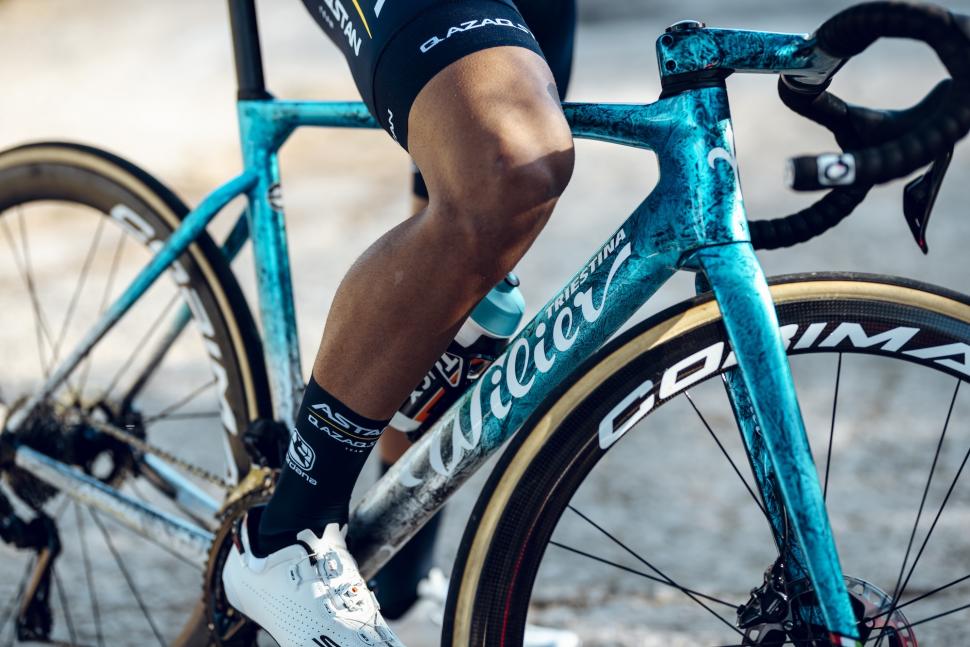
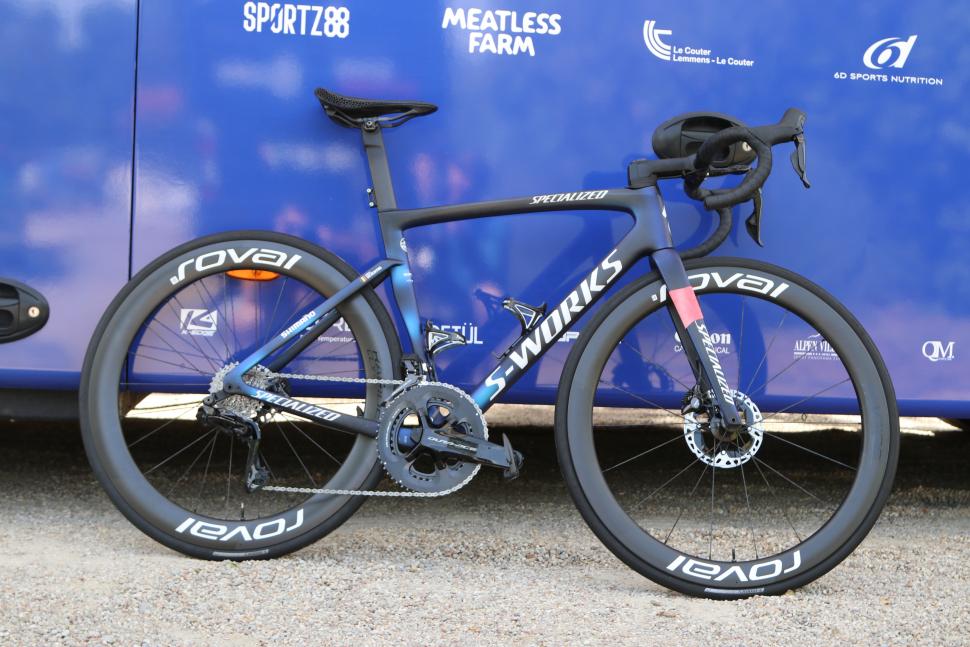
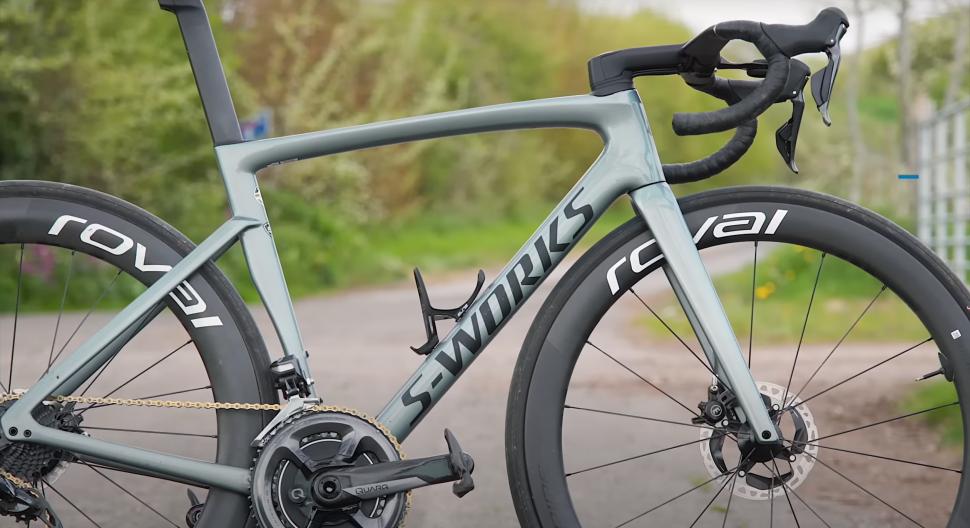
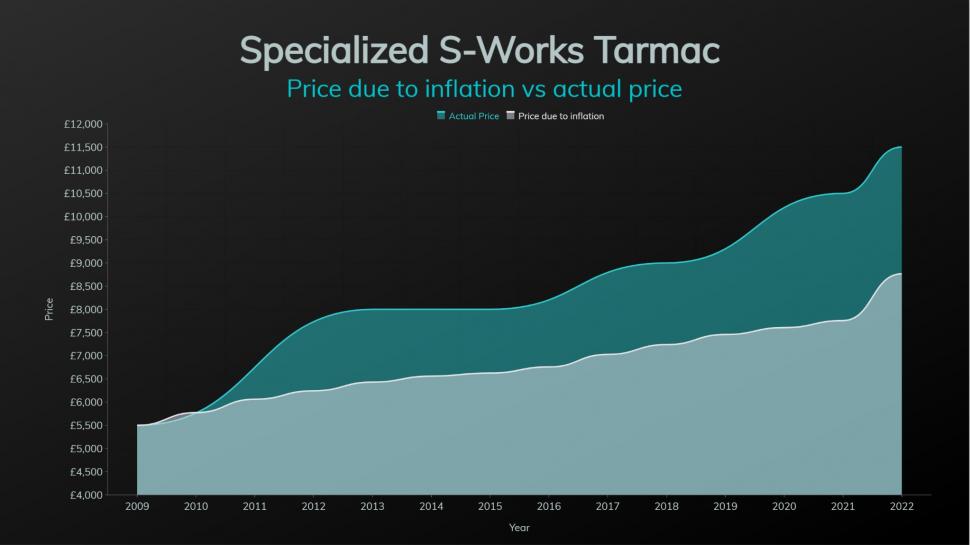
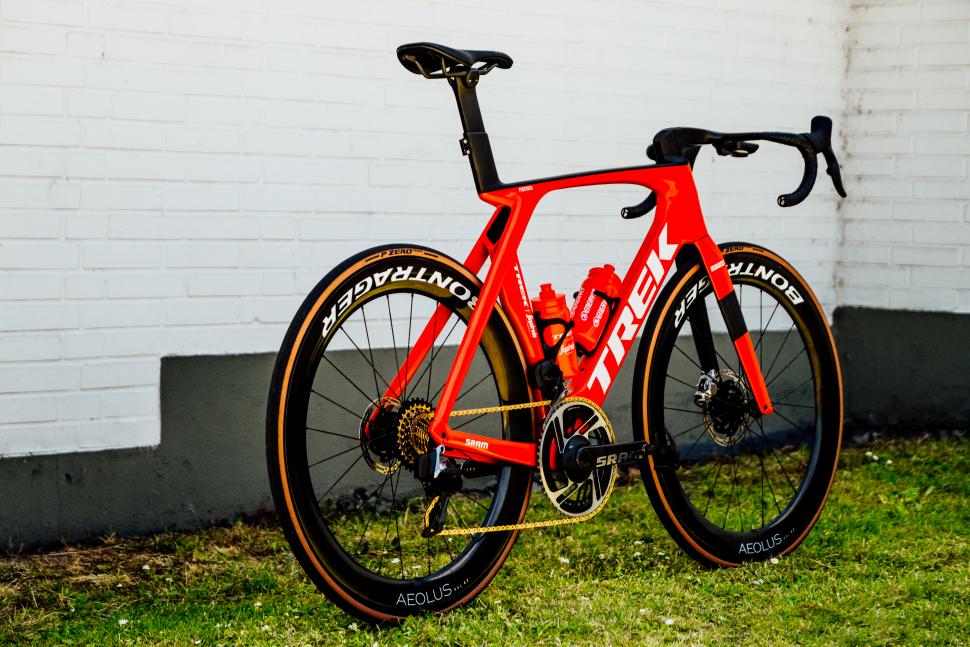
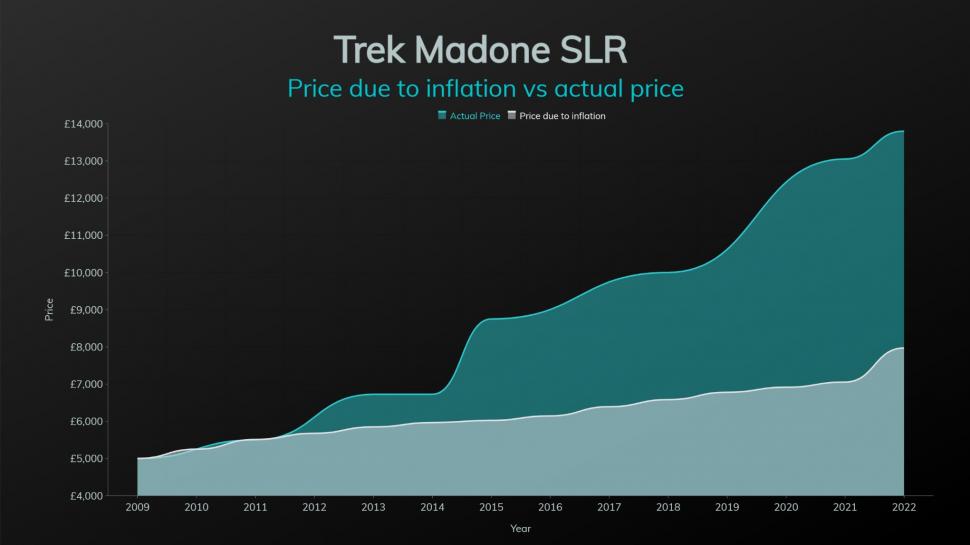
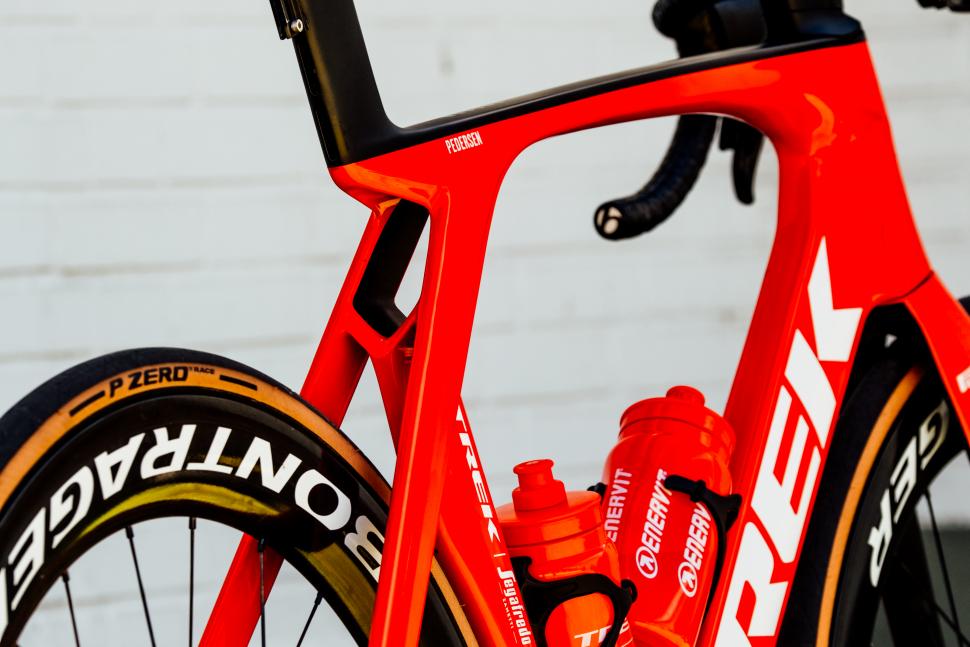
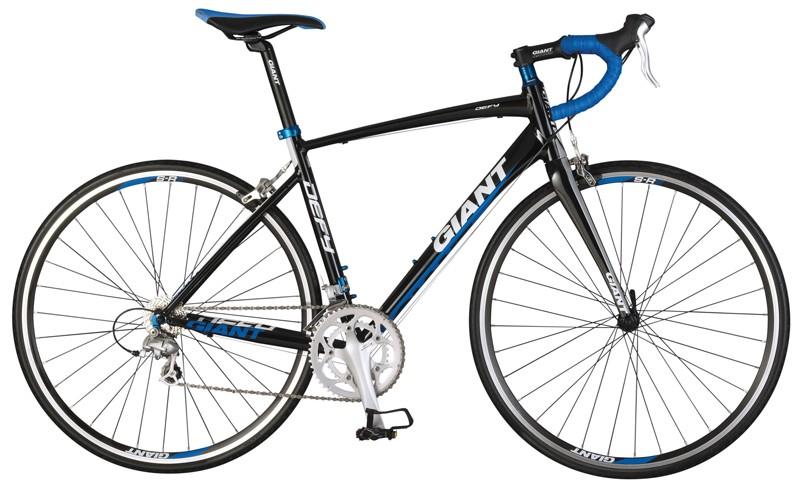
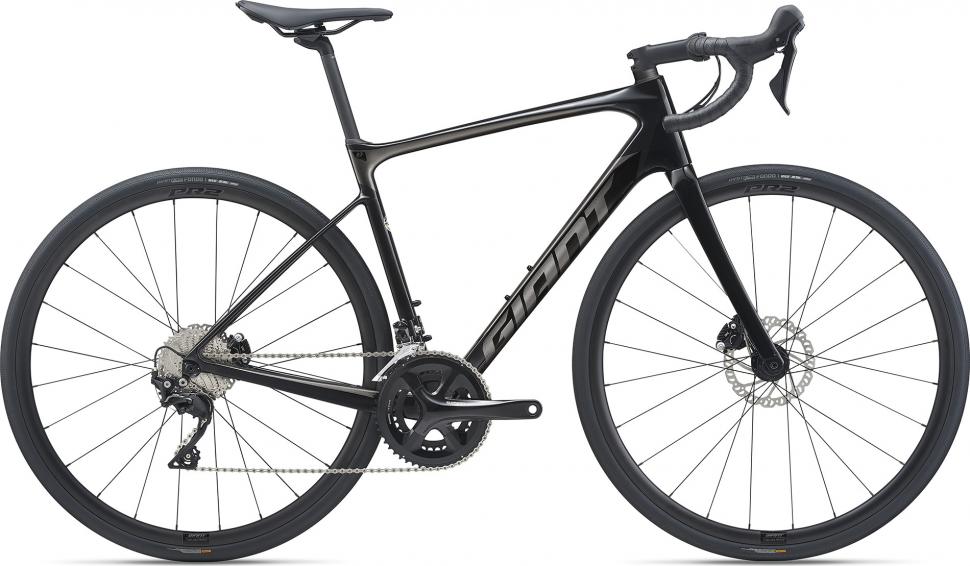
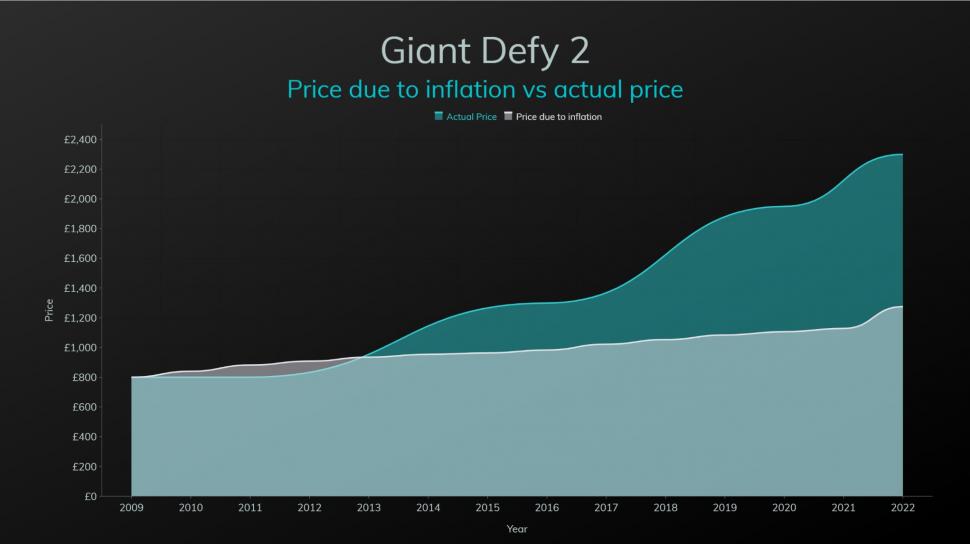
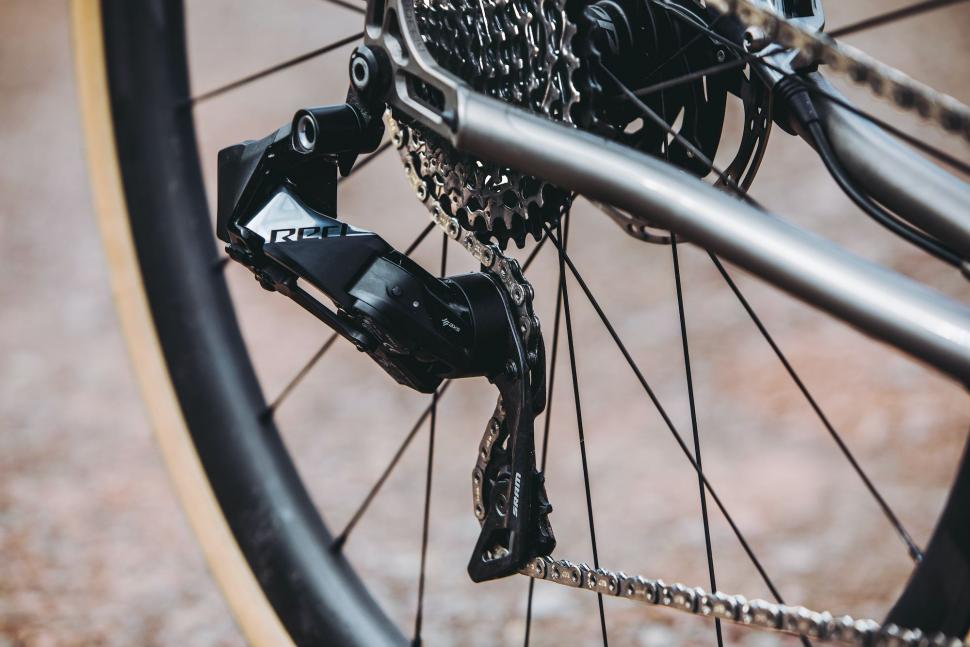
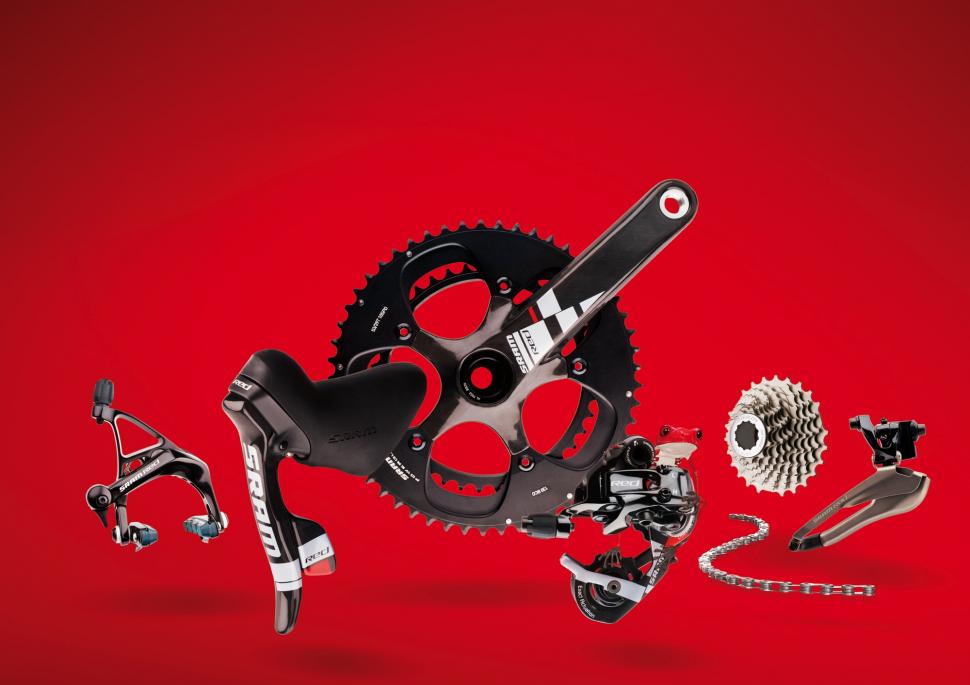
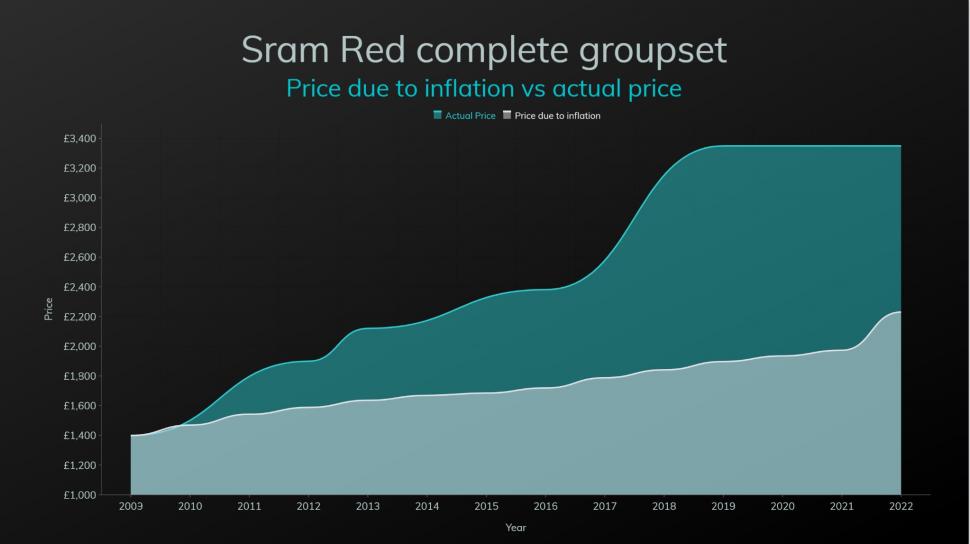

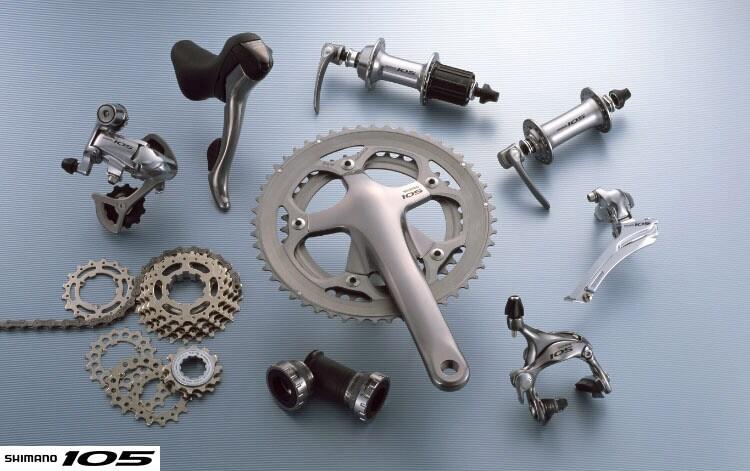
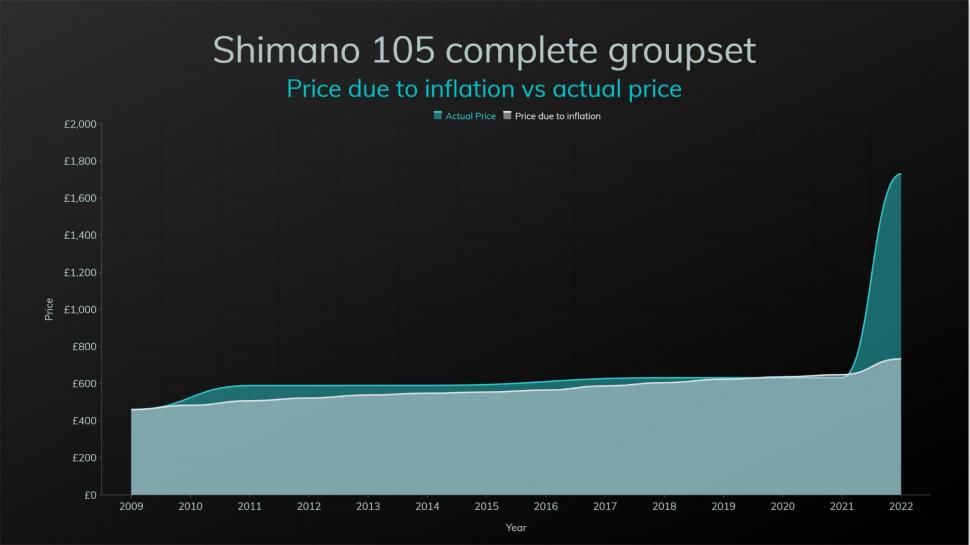
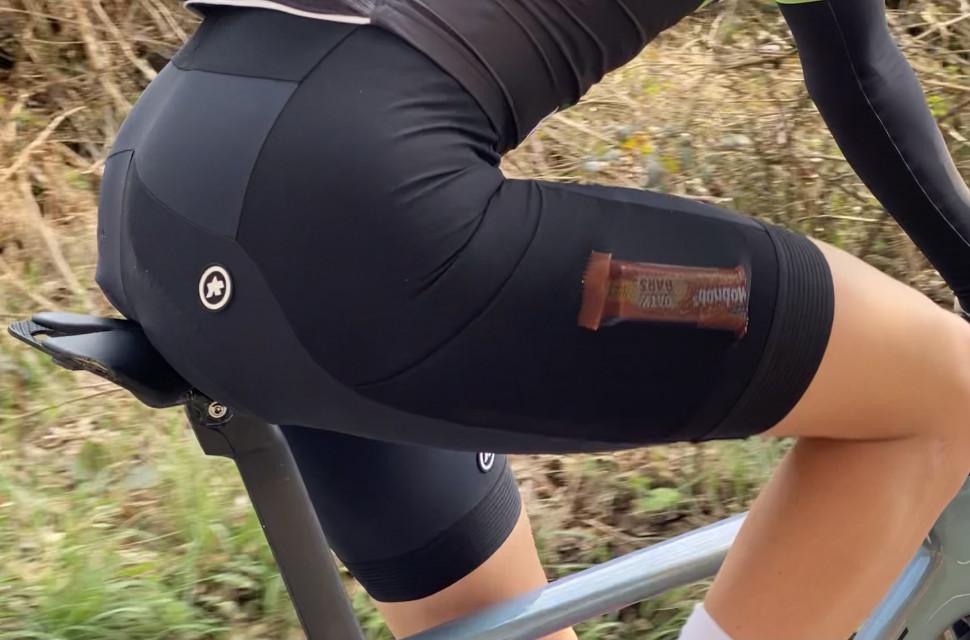
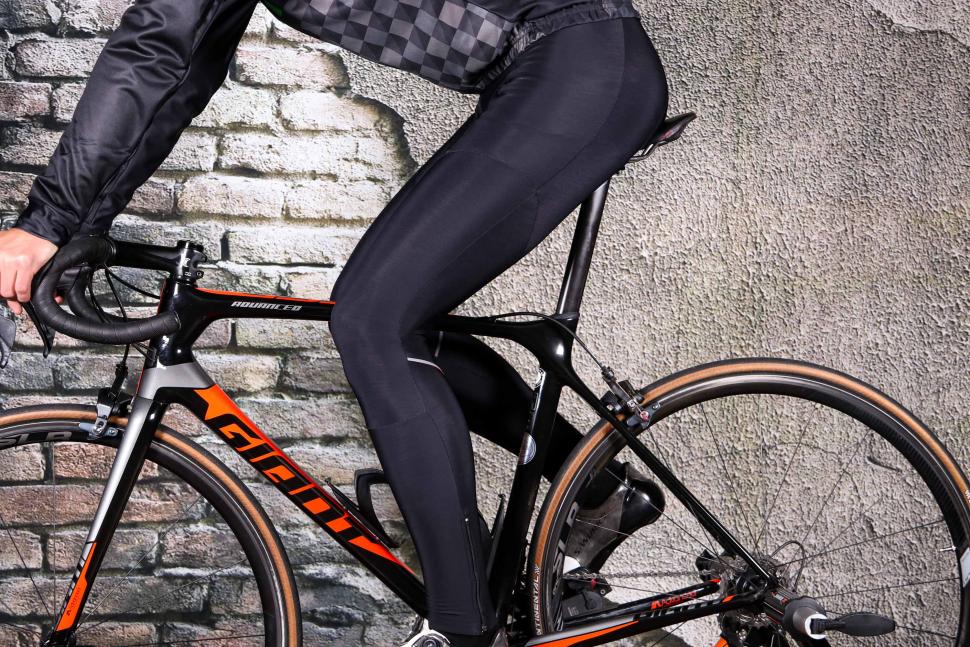
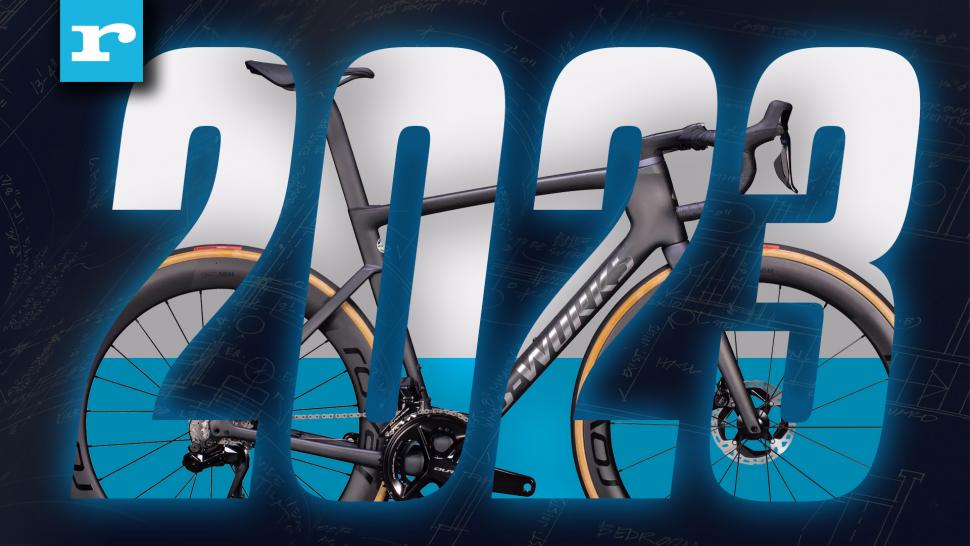
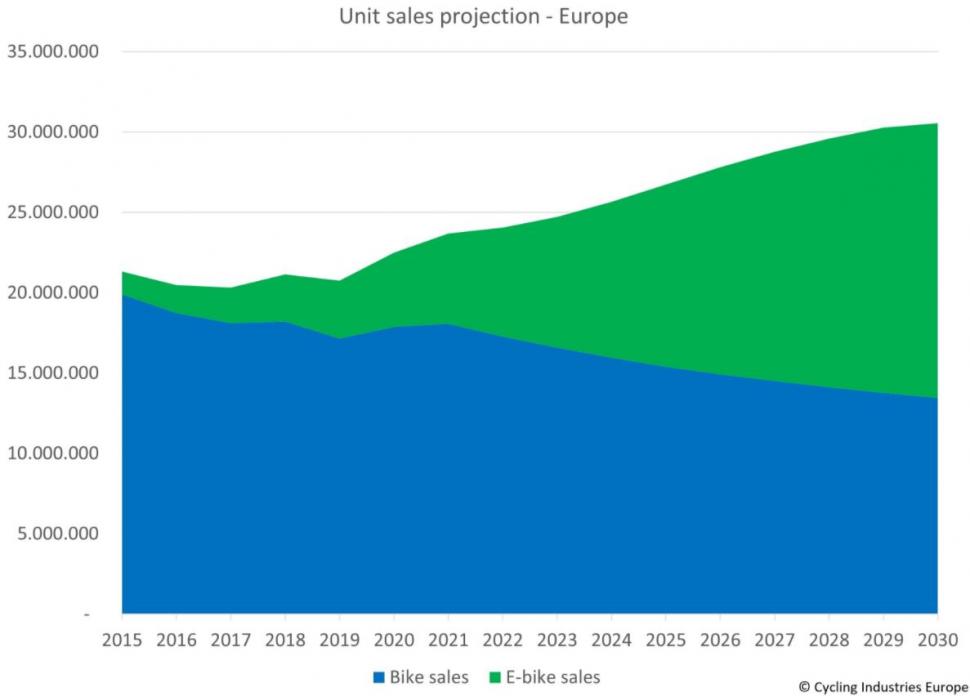
Add new comment
41 comments
I am horrified at the price of flagship bikes, and not a car snob, but to say many bikes are the price of a 'nice' car is a bit of a stretch. The same price as the cheapest new car on the market, maybe. Or the price of many perfectly serviceable used cars - but that's not comparing apples and apples, is it?
I got into top-shelf equipment around 1980, when I equipped my Gios with full Super Record for about $1300 US. For the time, except for the rims, that was a pro-level bike. Ceramic-treated rims would have been an extra $200 or so. Sidi shoes with Ti shanks were $80. It was expensive, but the availablity of anything better was at best arguable. That was going to be my last main bike. It didn't work out that way, but through the decades I'd fallen considerably off the bleeding edge. Except for the obstacles to bringing in new riders and the availablity of replacement parts, I'm not concerned.
It's been explained many times before but bicycles are still such terrible value for money compared to Motorbikes and I still don't understand why, £10,000 plus for a Road bike is cloud cuckoo land for most enthusiasts and abysmal value for money as well.
Well, for most riders it is, but 2K buys more than 1K did a decade ago, and 4kK is a nice place for most of us to feel we've arrived.
I noticed this yesterday - there are niche handbuilt e-motorcycles available for £7k which you can ride with a basic CBT. No speed restriction, other than what the motor is capable of providing. I had a look at Trek's eroad offerings, most of those are priced well above £7k
Cycling is expensive because Road CC and other retailers keep pushing RIDICULOUS GIMMICKY OVERPRICED bikes which won't make people go any faster. None of your 'road tests' are remotely scientific and are simply aimed at middle class suckers with more money than sense. Come to my club and do some Time Trials on your silly £5000 and £10,000 bikes, let's see how fast you go over set distances. The obsession with bike and wheel weights is the biggest laugh, what about average RIDER WEIGHT?? Isn't that the real issue? Cycling magazines and retailers are KILLING the sport for young people who see cycling as expensive. A lad at our club held our 25 mile TT record of 55 mins 23 secs for 4 years, using a bike he very intelligently made up from 2nd hand parts he bought for less than £200, making the guys on bikes costing thousands look a bit ridiculous. Time Trialling is not very popular because it exposes the BS being pumped out the cycling 'industry'.
not just middle class, a lot of upper class people spend crazy money for bikes.
What we're seeing with bicycle is the same thing we saw with golf, golf use to be the corporate game, where deals were closed, now it's cycling, they go for ride on their $10,000 bikes, ride around talking deals, ride to some highend bar someplace and sign the deal. Once it was caught on that corporate types were doing this the prices started to go up, along with the bike accessories.
I remember when I was in the corporate world prices of golf stuff was crazy high, with all sorts of wiz bang, and hyper scientific words for nothing more than the old fashion medicine man shows was doing to push some sort of alcohol drink but charge a lot for it. I had a co-worker who was having a bad time of it on the golf course, was reading all sorts of magazines about golf equipment, decided on a custom set of titanium clubs that cost $1,000 PER CLUB, and he got the entire set, told me his golf scores were going to improve, I told him before he spent the money to spend the money instead on pro lessons, nope, he gets his clubs, brags to me he got them, went out onto the course and scored the same averages he had aways done. He got back into to the office the next day, I asked him how the golfing went, he told me to shut up! I was laughing so hard!!
But the point is, you can buy the most expensive bike in the world and it's the engine on that bike that makes the bike, not the bike; just as it is the mechanics behind the golf club that make the club. You could put Pogacar on a Walmart bike, and he could probably beat 99%, if not 100% of the people reading this article no matter what price level of bike we're on!
You post this every time the cost of cycling comes up. Surely your story shows that people buying top end bikes are not KILLING the sport for young people, with the right guidance they can still get by on very little. The secondhand market is fabulous because of the people who always want to upgrade, for example my neighbour is currently selling his Scott SL 2014 with brand new wheels and upgraded Ultegra groupset for £450 because he splashed out on his (utterly fabulous) BMC dream bike. There is a plethora of factors influencing the takeup of all sports by young people, the fact that a few people choose to treat themselves to the most expensive bikes available is not one of them, however much you rant and rave about it.
I think I've read about the "lad held 25 mile TT record on a bike costing 3s 6d" so many times, I reckon he must be about 37 by now.
Once we've started paying £40 for a tyre they're not going to drop the price back to £25.
Cycling has gotten so expensive mainly because cycling enthousiasts allowed it to be.
Too many people think they need the same top level stuff as the top level riders, even though they are no where near top level themselves - and the top level gear won't help them get there either.
Now of course it's everybody's right to do as they please, but I would advise everyone to just focus on fun. You can enjoy riding far cheaper bikes very much, you don't NEED the top stuff for that. Who cares that another bikes is slightly more aero? So you are back home from your ride 5 minutes faster. Wasn't that ride supposed to be the fun part? Why would you want to be back sooner?
Me and my friends only ride old, rebuilt nineties mountainbikes. They can be found for very cheap, and with some TLC and a few well chosen parts you can make a super versatile, good quality, fun bike. Mine has flared drop bars and faster rolling tires, and it is a blast to ride!
My cycling hobby costs me almost nothing. Maintenance is cheap. Parts are cheap.
Are others faster? Yes. Do I care? No. Why should I?
As an aside, I was pleased to see that the price of the entry-level proper road bike in Decathlon had fallen back to £350 (rim brake version). May just be a sale price but it's a good value option for those who want a decent new bike but don't have cash to splash.
www.decathlon.co.uk/p/road-bike-triban-rc-120-grey/_/R-p-308062
I mentioned in another thread about bike value last week that I had had a go on a friend's disc brake version of that bike and that if I had to swap my full carbon Ultegra Di2 road bike for it I wouldn't be that disgruntled. Crazily good bike for the price.
I wanted mostly to give kudos for the graphs. Really nice effort!
On ascending prices, I am of the lucky ones, I bought my bicycle 12 years and after numerous upgrades still really like it, so not any need for replacement. I am also very eager to buy used stuff where there are plenty of perks.
Interesting article that does describe the situation but fails to look at the reasons for it.
For instance if you spoke to the people who set the UK pricing for all these brands like Trek and others who assemble the bikes in the EU and then bring them into the UK, you'll find out that they are now subject to a 14% import duty rate. Which is why there was a big jump in prices when the Brexit border came into force in 2021.
No mention of this 14% in this article, which looks like a big oversight.
I love the comments from people arguing that prices have not really increased... oh yes they have, that's undeniable.
Equally however, we aren't necessarily comparing like for like on a performance level... you are getting more for more these days.
But that 'more' is probably worth exploring. How much of that 'more' is needed, and how much is forced on us by the market? So disc brakes answered an industry problem... how could you get consumers to widely adopt deep section, carbon rims? Carbon rim braking performance was dubious, wearing out a carbon rim is brutally expensive, plus all the issues with heat management etc. Discs made all those problems go away, and accordingly more people than ever are regularly riding deep-sections. Expensive race bikes are no longer the preserve of the racing cyclist.
So, better braking is the consumer trade-off here, but the industry motivation was to create tech they could use to increase base retail value, and we've readily accepted it. But, how good could rim brake technology be with another 3-5 years development? And also, why are disc brakes so much more expensive than rim brakes?
Electric gears... enable manufacturers to add more gears and charge us a premium for them. Those extra gears are essential you say? So how come, great swathes of riders are switching to 1x set ups? Consumers are shouting that they don't care about gear spacing with their set up choice, yet are readily spending out for ever more gears... it's weird.
Getting down to it, this is all about consumers paying to be cool. You are literally buying status when you purchase an SL7 (or similar). It's nothing more, we all want to be cool, but unfortunately, cool is no longer as affordable as it was... which is kind of exactly what the marketers want.
Market rate will always be the rate the market is willing to pay, and rightly or wrongly, the industry has identified that people are willing to pay more.
Ah but if you compare the price of mainstream brands ten years ago to the price of knock-off kit in Aldi today, it's actually only a minor price increase.
But, how good could rim brake technology be with another 3-5 years development?
Fortunately, we're never going to find out
why are disc brakes so much more expensive than rim brakes?
There are astoundingly good hydraulic discs on the £450 folder I bought recently
Excellent point about your folder's brakes. MTB and flat bar bikes can have inexpensive, poweful disc brakes but road bike disc brakes come in as extorsionately expensive.
road bike disc brakes come in as extortionately expensive
Because the brifter was such an astounding invention!
Road disc brakes without gearchange mechanism, for singlespeed bikes, for example, are still very costly. Perhaps because of limited demand and availability. And mtb gear change triggers are also potentially quite cheap.
"a boom in bike sales and you get a lot of demand and not much supply, which certainly does have an impact on rising prices."
Isn't that just manufacturers exploiting buyers? Why should they maintain revenues when they have a lack of stock?
When I first got back into cycling about 12 years ago, I got pretty mcuh everything I needed to ride for about £1500. This was the bike - Bianchi Via Nirone. Then all the added accessories ie helmet, shoes etc. This is a break down of what I bought take from Wiggle and selecting the cheapest item in the list.
I have caveated a few things. The bike is carbon as I don't really see many decent Alu frames at anymore less Cannondale Caad or Spez Allez but they are more expensive than the offering from here. So: This is what a newby could be axpected to pay to get all the basics.
Bike - Vitus Carbon with 105 disc groupset - https://www.wiggle.co.uk/vitus-zenium-crw-road-bike-105
Shoes - https://www.wiggle.co.uk/dhb-dorica-road-shoe
Helmet - https://www.wiggle.co.uk/dhb-r20-road-helmet
Pedals - https://www.wiggle.co.uk/shimano-rs500-spd-sl-road-pedals
Eyewear - https://www.wiggle.co.uk/dhb-omnicron-triple-lense-sunglasses-1
Shorts - https://www.wiggle.co.uk/dhb-shorts-2
Jersey - https://www.wiggle.co.uk/altura-airstream-cycling-jersey
Lights - https://www.wiggle.co.uk/lifeline-cycle-safe-light-set
Puncture kit - https://www.wiggle.co.uk/lifeline-puncture-repair-kit
Bottle x 1 - https://www.wiggle.co.uk/lifeline-water-bottle-600ml-4
Cage x 1 - https://www.wiggle.co.uk/zefal-aluminium-plastic-bottle-cage
Total spend = £1,505 So in reality not much more to get startyed after a 12 year gap with inflation etc. I think the price of top end bikes is totally ludicrous. I can see the bike I own now costs about 2 grand more than when I bought it (Trek Emonda SLR 7) but the entry level is still not too cost prohibitive to newby riders. If that wasnt the case I would worry about the future of the sport. If anyone is willing to spunk away 5 figure sums on a bike thats their business tbh.
On the other side of things, in 2014 you could buy a Pinarello F8 Di2 for approx £10k. The F Di2 is £12.6k. Not everything is rising at the rates mentioned for Specialised & Trek. I suspect it is that some of these manufacturers have brought their prices up in line with what where prestige makes of ages gone by (inc Celvelo, Colnago) as they have put more R&D into their top end models.
An interesting article. I wonder if there are any economists who could weigh in on the appropriate use of inflation.
The bike industry would certainly argue that whilst the names might have stayed the same, the bikes themselves have improved significantly. Inflation statistics are based on a basket of goods that stays largely the same - a pint of milk produced today will be essentially identical to a pint of milk from 2009. But today's bikes are arguably "better" than those of yesteryear - certainly the manufacturers like to tell us that every iteration is more aero, stiffer, more comfortable etc. than the previous generation.
I note that all the current generation of bikes have disc brakes, where as they were all rim brake in 2009. In several cases you're comparing mechanical groupsets to electronic ones (google suggests the Tarmac SL3 was available with Di2 but the RRP quoted is for a SRAM mechanical equipped version - but I might be wrong on that one).
More obviously, the (current) Defy Advanced has a carbon frame, while the 2009 Defy was aluminium alloy. I note that in 2016 Giant released the Contend, which on paper appears much more directly comparable to the 2009 Defy, and the current RRP for the entry level model is £849. A quick browse on cycling retailers websites indicates there are a number of entry level road bikes that look at least as good as the 2009 Defy with an RRP <£1,000.
Similarly, while the "range topping" Madone might have got more expensive, the RRP of the cheapest current Madone, the SL6, is only £4,800. I wouldn't want to say that is a "fairer" comparison, but I would say given the choice between a factory-fresh 2009 Madone 6.2 and a current SL6 for the same money, I for one would probably go for today's model.
I guess my conclusion would be that if you're a competitive cyclist who wants every last marginal gain, then yes you would need to spend more today to have the latest and greatest tech. But for everyone else, there are still some very good bikes at sensible prices.
"The bike industry would certainly argue that whilst the names might have stayed the same, the bikes themselves have improved significantly."
They never have. An excellent article from BQ, "Are modern bikes faster?" showed (some time ago already, 2010) that over a hundred years cyclists speed hadn't risen any faster than human performances generally (from better nutrition, training, and why not, doping).
A much more interesting article would have factored in the change in quality over the years, rather than simply comparing the cost of a model name in one year to the cost of the same model name in another year (this failure truly reaching its absurd peak when comparing 105 mechanical to 105 Di2).
It’s not at all clear to me that, on a quality basis (ignoring the model names), the cost of cycling has outpaced inflation.
What has outpaced inflation is Fred’s cost of occupying the same place in the prestige hierarchy.
If Fred wants to ride (say) 105 because he’s ashamed to be seen on a non-performance tier bike, yes, he’s going to have to pay more for that in 2023 than he would have in the past. But if you just want to ride a bike of similar high quality to a 105 bike of the past, all indications are that you can still do that at a reasonable price; you just have to ignore the model names.
These breathless complaints would make more sense if the bike industry had left the lower end (relatively speaking) of the market behind, by either no longer producing products for it or no longer improving their quality, but that’s not what’s happened. (Of course it’s not—they still need to get people hooked in the first place.) It’s just that the very-good-but-not-sexy stuff isn’t what people spend a lot of time talking about or what sites like road.cc spend a lot of time writing about. If you don’t like that, you can always start being the change you want to see in the world.
This is a very good point. Back in 2009 we generally had fewer speeds for a given group (Ultegra & 105 only went 11sp with 6800/5800 for example) and generally shifter cables ran externally. And mid range rim brakes of that era were noticeably less powerful - there's a big difference between 5700 & 5800 brakes.
So we're now at the stage where most of Shimano's groups are ergonomically identical with only weight/speeds differentiating the groups. I recently went from Ultegra/105 to current gen Claris and subsequently back again (frame swap) and whilst yes Ultegra shifts are slightly smoother there's not a huge difference. Shimano clearly realise this which is why they go poverty spec on cranksets for that group (usually square taper with ugly chainrings).
Now whether under-tape shift cable routing improves shifting is another matter of course!
Components certainly wear out quicker now. I have to buy new wheels every second year whilst others I know have wheels that have lasted 20 years.
Is that due to them being performance wheels? Anything cycle related has to find a trade-off between weight and durability, so higher priced wheels probably have a more finely tuned trade-off so that they can advertise a lower weight and hopefully sell another pair after a couple of years.
Pages